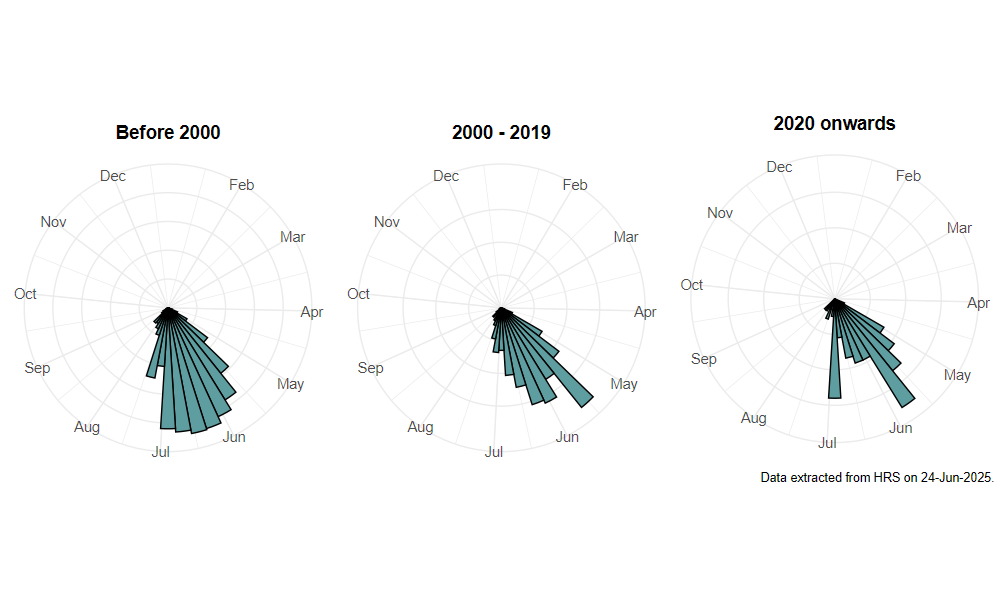Parhelophilus versicolor (Fabricius, 1794)
Identification
Identification difficulty = 3. ![]()
![]() according to Ball & Morris, 20241
according to Ball & Morris, 20241
Synonymy
Helophilus versicolor Fabricius in Coe(1953)2.
Biology
The larva has been found in the decaying rhizomes of Typha in a pond and puparia have been found between the leaf sheaths of the plant. There seems to be a strong association with Greater Reedmace Typha latifolia and adults are often found resting on the stems and leaves of the plant. Occurs in wetlands of all types where there are pools and water filled ditches with stands of tall, emergent vegetation. Adults are usually swept from such vegetation, or found visiting flowers nearby.
Flight period
The following plots show the number of unique records per week excluding those reported to be of immature stages.

Distribution
Locally abundant in suitable habitat in the lowlands of southern Britain, and occurring northwards to Nairn. Scarce in the northern parts of its range and apparently absent from many places north of a line between the Humber and the Ribble.

Trends
The following plots show the Frescalo TFactor vs year and a map of the rescaled frequency (all records) for the species.